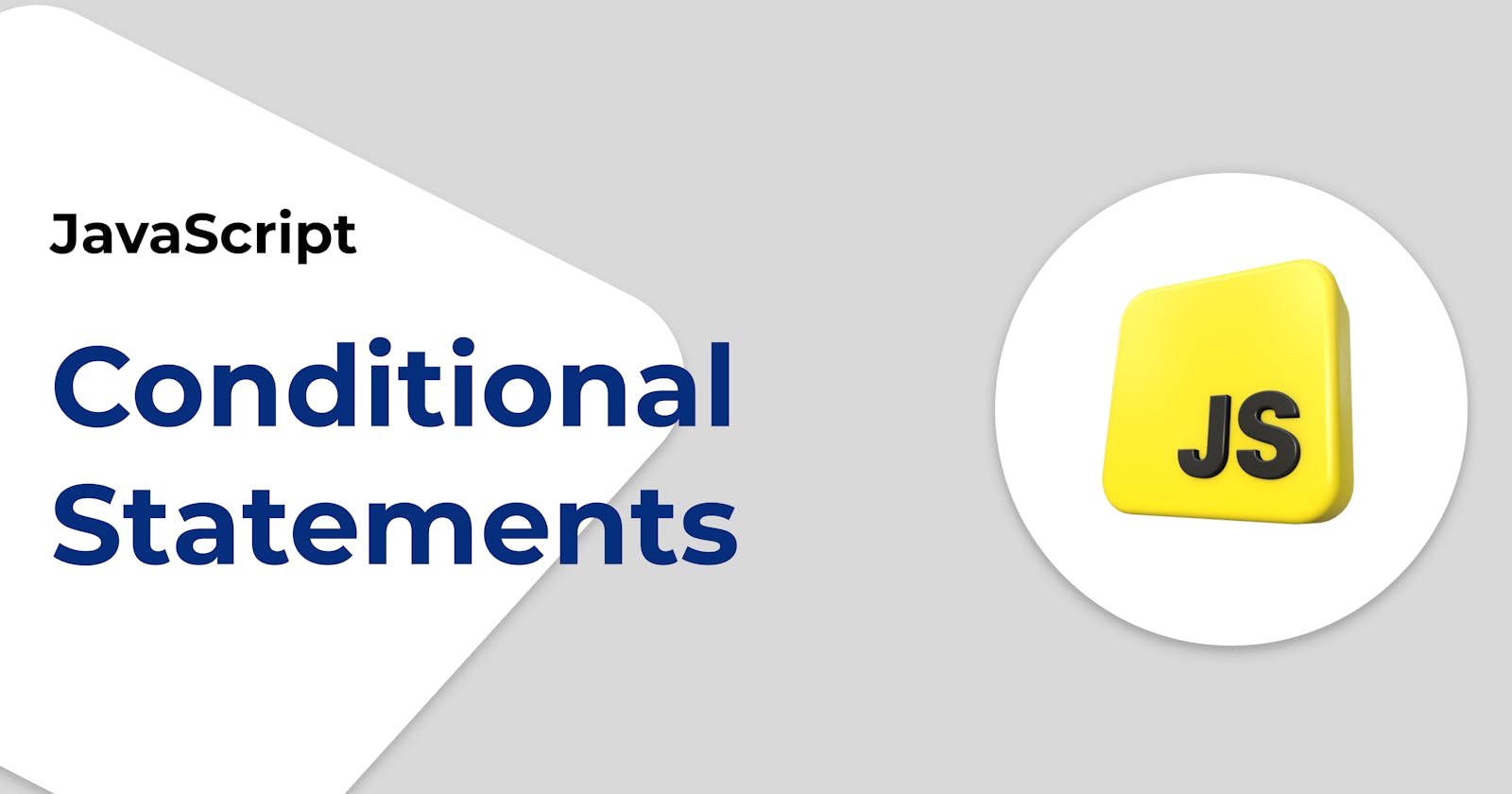Meaning
Conditional statements allow you to execute specific blocks of code based on conditions. If the condition meets then a particular block of action will be executed otherwise it will execute another block of action that satisfies that particular condition.
Simple If
It executes a block of code if a condition is satisfied and will do nothing if the same results in false.
let a = 20
if (a < 100){
a += 20
}
/* here, if the value of A is less than 100 only then it will enter in
the block otherwise will do nothing */
if....else
It executes if block if the condition is true and executes else if the condition results in false. Only will execute for a condition.
Use
if-elsewhen you need a default action if the condition isfalse.An
if-elsestatement includes anelseblock that runs if theifcondition isfalse
let a = 100
if (a < 20){
console.log("Smaller")
}
else{
console.log("bigger") // result
}
else.....if.....else ladder
The if-else ladder evaluates conditions from top to bottom. Once a condition is true, the corresponding block of code executes, and no further conditions are checked.
The
else ifstatement allows for multiple conditions, providing a clear structure to handle complex decision-making.The syntax is simple just add another
ifelseafterelseof previous flow
let a = 20
if (a < 10){
console.log("10");
} else if (a < 20){
console.log("20");
} else if (a < 30){
console.log("30"); // result
}
Nested ifelse
It is used to check more complex conditions
we add another
ifinsideifcondition.This approach allows you to create multiple layers of conditions, where the execution path depends on a combination of different criteria.
Every
ifmust have its correspondingelse
let a = 120
if (a < 100){
if (a > 200){
console.log(a)
} else{
console.log("no") // result
}
} else {
console.log("exit")
}
/* It will first check whether A is smaller than 100 or not. If yes do
check if the same is greater than 200 or not. If yes, do print the value
of A. If not, print "no" but if the first condition return false than do
print "exit" */
Switch case
Use
switchwhen you have a single expression with multiple possible outcomes.Ensure
breakis used to prevent unintended fallthrough unless it's intentional.Keep the
defaultcase to handle unexpected values or provide a fallback.Avoid using
switchfor complex conditions or ranges;if-elseor other control structures are better suited for such cases.the
switchstatement provides an alternative to multipleif-elseconditions when you need to evaluate a single expression against several possible outcomes.A basic
switchstatement uses theswitchkeyword, followed by an expression to evaluate, and then one or morecasestatements to handle specific outcomes. Thedefaultkeyword defines a block to execute if none of the cases match.Break
Eachcasetypically ends withbreakto exit theswitchblock. Withoutbreak, execution "falls through" to the next case, which might be intentional in some scenarios.default
Thedefaultcase is like anelseblock, handling any situation not covered by the definedcases
let day = "Monday";
switch (day) {
case "Monday":
console.log("Start of the workweek.");
break;
case "Wednesday":
console.log("Midweek.");
break;
case "Friday":
console.log("End of the workweek.");
break;
case "Saturday":
case "Sunday":
console.log("Weekend.");
break;
default:
console.log("Unknown day.");
}
/* if day == "Monday" print first statement and break the flow
of checking conditions and the same will check if first found
no match. In case "saturday" and "sunday" if result in any of them
then print "weekend" means they share same result */
You have Learned JavaScript conditional statements.................
If you want more such content then make sure to following me on all available platform
Thank you for reading 🤍
Written By Mohit Soni
